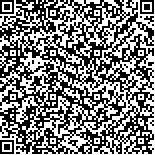| 引用本文: |
杨伟丽,宾骥,王贤文,李思鑫,吴文科.归脾汤联合鸣天鼓治疗突发性聋伴眩晕气血亏虚证的临床观察[J].湖南中医药大学学报,2023,43(9):1632-1638[点击复制] |
|
| |
|
|
| 本文已被:浏览 1808次 下载 1030次 |
| 归脾汤联合鸣天鼓治疗突发性聋伴眩晕气血亏虚证的临床观察 |
| 杨伟丽,宾骥,王贤文,李思鑫,吴文科 |
| (湖南中医药大学第一附属医院, 湖南 长沙 410007;湖南中医药大学, 湖南 长沙 410208) |
| 摘要: |
| 目的 探讨归脾汤联合鸣天鼓治疗突发性聋伴眩晕气血亏虚证的临床疗效及作用机制。方法 60例突发性聋伴眩晕气血亏虚证患者随机分成对照组、观察组,各30例。因依从性差脱落3例,最终观察组28例、对照组29例完成本研究。对照组采用西医常规治疗,观察组在西医常规治疗基础上加用归脾汤联合鸣天鼓治疗,疗程均为14 d。比较两组治疗前后平均听阈变化;比较两组眩晕视觉模拟评分法(visual analogue scale, VAS)评分、眩晕障碍量表(dizziness handicap inventory, DHI)评分、汉化眩晕症状量表(vertigo syndrome scale-Chinese, VSS-C)评分、伴随症状VAS评分及中医证候评分;检测血液流变学相关指标;评估临床疗效。结果 治疗14 d后,观察组有效率为85.71%,高于对照组的79.31%(P<0.05)。与对照组比较,观察组平均听阈、眩晕VAS评分、DHI评分、VSS-C评分、耳鸣评分、耳闷胀感评分、睡眠障碍评分、中医证候评分均降低(P<0.05,P<0.01),而耳周感觉异常评分、恶心呕吐评分差异无统计学意义(P>0.05),血液流变学指标全血高切黏度(whole blood high shear rate, HS)、全血中切黏度(whole blood middle shear rate, MS)、全血低切黏度(whole blood high low rate, LS)、血浆黏度(plasma viscosity, PV)、红细胞压积(hematocrit, HCT)、红细胞聚集指数(erythrocyte aggregation index, EAI)均显著降低(P<0.01或P<0.05)。结论 归脾汤联合鸣天鼓较常规治疗能更好地提升突发性聋伴眩晕气血亏虚证患者的听力,改善眩晕症状及耳鸣、耳闷胀感、睡眠障碍的伴随症状,并显著减轻患者中医证候,取得更优的临床疗效,其作用机制可能与改善患者血液流变学指标有关。 |
| 关键词: 突发性聋 眩晕 归脾汤 鸣天鼓 血液流变学 导引法 气血亏虚证 |
| DOI:10.3969/j.issn.1674-070X.2023.09.013 |
| 投稿时间:2022-12-13 |
| 基金项目:国家自然科学基金面上项目(81973914);湖南省科技厅2021年度创新型省份建设专项科普专题项目(2021ZK4105);湖南省自然科学基金项目(2020JJ4486);中医药防治眼耳鼻喉疾病湖南省重点实验室开放基金项目(2018YGC03);湖南中医药大学教学改革项目(JG063);湖南省卫生健康委员会科研计划项目(20200979)。 |
|
| Clinical observation of Guipi Decoction combined with occipital-knocking therapy in treating sudden deafness with vertigo of qi and blood deficiency pattern |
| YANG Weili,BIN Ji,WANG Xianwen,LI Sixin,WU Wenke |
| (The First Hospital of Hunan University of Chinese Medicine, Changsha, Hunan 410007, China;Hunan University of Chinese Medicine, Changsha, Hunan 410208, China) |
| Abstract: |
| Objective To investigate the clinical efficacy and mechanism of action of Guipi Decoction combined with occipital-knocking therapy in treating sudden deafness with vertigo of qi and blood deficiency pattern (SDVQBDP). Methods Sixty SDVQBDP patients were randomly divided into control group and observation group, with 30 patients in each group. Three patients quit the clinical research because of poor compliance. Finally, 28 patients in the observation group and 29 patients in the control group were included in the study. The control group was treated with conventional western medicine, while the observation group received Guipi Decoction combined with occipital-knocking therapy based on conventional western medicine. The treatments lasted for 14 d. The average hearing threshold changes were compared between the two groups; moreover, the two groups were compared in vertigo visual analog scale (VAS) score, dizziness handicap inventory (DHI) score, vertigo syndrome scale-Chinese (VSS-C) score, accompanying symptom VAS score, and Chinese medicine pattern score; the related indexes of hemorheology were measured; the clinical efficacy was assessed. Results After 14 d of treatment, the effective rate in the observation group was 85.71%, which was higher than 79.31% in the control group (P<0.05). Compared with the control group, in the observation group, the average hearing threshold, vertigo VAS score, DHI score, VSS-C score, tinnitus score, ear stuffiness and distension score, sleep disorder score, and Chinese medicine pattern score were all reduced (P<0.05, P<0.01), while no statistically significant difference was found in periauricular sensory abnormality score, nausea and vomiting scores (P>0.05). Moreover, the whole blood high shear rate (HS), whole blood middle shear rate (MS), whole blood high low rate (LS), plasma viscosity (PV), hematocrit (HCT), and erythrocyte aggregation index (EAI) in the observation group were significantly reduced (P<0.01 or P<0.05). Conclusion Compared with conventional treatment, Guipi Decoction combined with occipital-knocking therapy can better improve the hearing of SDVQBDP patients, and alleviate the symptoms of vertigo and the accompanying symptoms of tinnitus, ear fullness, and sleep disturbance. It can notably alleviate the Chinese medicine patterns and exert better clinical efficacy. The mechanism of action may be related to the improvement of hemorheological indexes in SDVQBDP patients. |
| Key words: sudden deafness vertigo Guipi Decoction occipital-knocking therapy hemorheology daoyin qi and blood deficiency pattern |
|

二维码(扫一下试试看!) |
|
|
|
|




